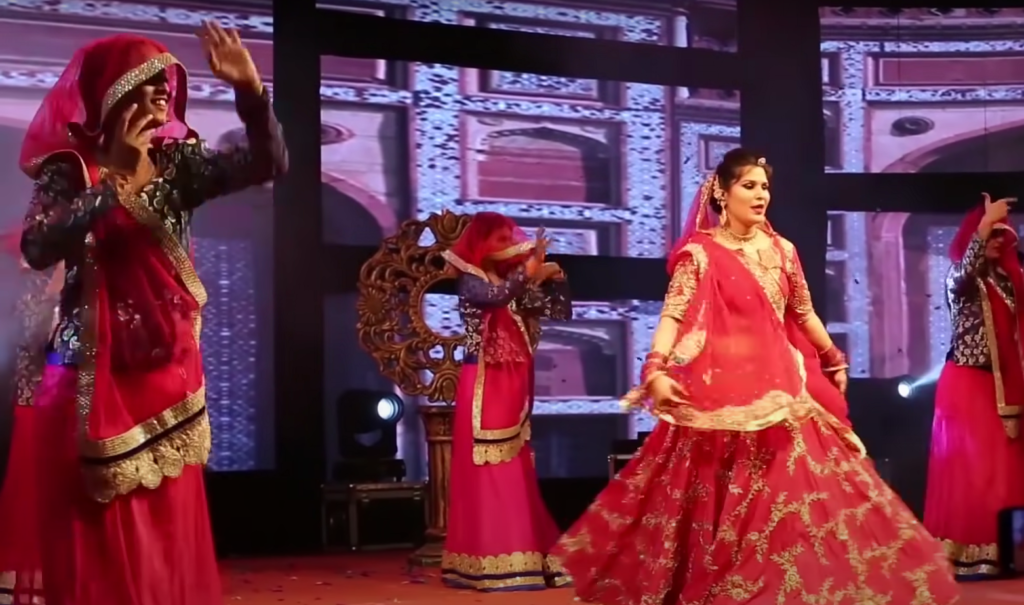Ghumar dance originated in Rajasthan during Rajput rule. It is performed by the Bhil tribe to worship the goddess Saraswathi. The word Ghumar represents the twirling movement elegantly done by the dancers. It is one of the special types of folk dance, performed by an individual woman or a group of women. When welcoming the bride to her new marital home, the married bride is asked to perform the Ghumar dance. It is also performed on special occasions like Holi, Rain, Diwali, etc.

Ghumar Costume
Women wear fine swirling long skirts called ghagra with semi-transparent or opaque veils on their heads. They use small mirrors, or Kundan-based accessories for their dance. They also dance while carrying earthen pots on their heads. Their sparkling and dynamic swirling skirts produce a kaleidoscope of colors and spread joyfulness and exultation. Their colorful and bright outfit makes the dance extremely attractive for eyes.
The Swirling Beauties
Ghumar has no limitation of time. Dancers perform Ghumar dance for hours, it can sometimes last the entire night. Women dance elegantly in a circular movement with a clockwise and anticlockwise rotation and often they held the hands of the other women standing beside them, swirl and clap. The song’s tempo decides the steps, if the beat increases, the dancers swirl and start to dance with rapid movements.
Importance of Ghumar Dance
Ghumar is not only an art of dancing but also a symbol that represents femininity. In the past days, Young girls perform Ghumar dance just to let the community people know they are completing their adolescence and stepping on to their womanhood but nowadays it is performed by women of all ages.
